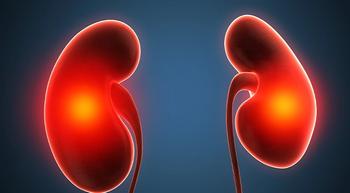
Pancreatic Cancer Survival Rates Lower in Real World Versus Clinical Trials
In the analysis, there was as much as a 92 percent difference in median overall survival (OS) seen between patients treated in randomized controlled trials and "real world" data.
Patients with pancreatic adenocarcinoma enrolled on clinical trials have “profoundly improved survival” compared with patients in the general population, according to research presented at the 2016 Gastrointestinal Cancers Symposium. This suggests that oncologists who use trial data to prognosticate may be missing the mark.
In the analysis, there was as much as a 92 percent difference in median overall survival (OS) seen between patients treated in randomized controlled trials and “real world” data from the Surveillance, Epidemiology, and End Results (SEER) database. Additionally, patients treated in clinical trials had a 72.7 percent increase in two-year OS rates compared with the SEER findings.
“We believe that lots of clinicians use trial data to predict their own patients’ survival, but our findings suggest that physicians should use caution when extrapolating survival estimates from clinical trials to the real world,” said senior author James D. Murphy, of University of California, San Diego (UCSD), School of Medicine. “We know that clinical trial patients, in general, are somewhat different from the real-world population.”
For the study, the researchers conducted a literature search of phase 3 trials published between 2005 and 2012 for patients with pancreatic cancer. They excluded secondary or pooled analyses trials with second-line treatments and nonrandomized studies. Findings from the clinical trials were compared with a cohort of patients from the SEER program, matching for diagnosis year, age and stage of disease. The aim was to explore differences in median survival, one-year survival and two-year survival between the SEER registry patients and clinical trial cohorts.
“We know patients have to be fit to enroll, and they tend to live near academic centers (i.e., trial sites), be wealthier, and to have better access to health care,” said Murphy. “If they are on a trial, they are also likely to have closer follow-up. Still, there have not been many studies determining if being on a trial actually translates into a difference in survival.”
The literature search resulted in 27 trials that fit the search criteria, consisting of 55 clinical trial arms involving 8,438 patients. Tumor characteristics were categorized as: (1) patients with mixed metastatic and locally advanced unresectable metastatic pancreatic cancer; (2) those with unresectable locally advanced disease; and (3) patients deemed resectable.
Almost 100 percent of all the randomized trials had survival outcomes that were better than outcomes seen in the SEER registry, and this held true for each of the three populations, reported lead study author Reith R. Sarkar, a medical student at the UCSD, School of Medicine. “Physicians often use clinical trial data to estimate expected survival for their patients; however, clinical trial results may not generalize to a broader population,” he said.For patients with mixed metastatic/locally advanced unresectable pancreatic cancer, there was a 3.23-month median increase in OS between the clinical trial and the SEER database, representing a 92 percent improvement. In the unresectable locally advanced group, OS was improved by 41 percent in the clinical trial versus SEER, a median improvement of 2.96 months. In the resectable group, median survival was 6.1 months better in the clinical trial arm versus SEER group, a 36 percent improvement.
The average increase in one-year OS, in these respective groups, was 88.8 percent, 45.3 percent and 23.7 percent. Absolute differences in one-year survival were more than 12 percent in each category (ranging from 12 to 14.7). Average increases in two-year OS were 72.7 percent, 49.9 percent and 34.0 percent, which were associated with absolute differences of 2.5 percent, 4.6 percent and 11.9 percent, respectively.
“We saw that for metastatic patients, average survival was almost double for clinical trial patients, versus real-world patients. The differences were greatest for the worst-prognosis cancers,” Sarkar said. “We think this is a pretty profound difference.”
Sarkar acknowledged that he and his team could not assess the SEER database for patient performance status, underlying comorbidities, and differences in treatment-factors that may help explain some of the survival differences. These factors could have impacted the overall outcomes.
Sarkar RR, Matsuno R, Murphy JD. Pancreatic cancer: Survival in clinical trials versus the real world. J Clin Oncol. 34, 2016 (suppl 4S; abstr 216).




